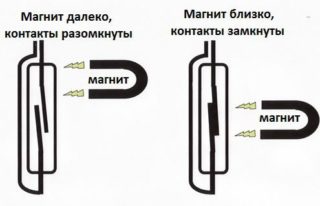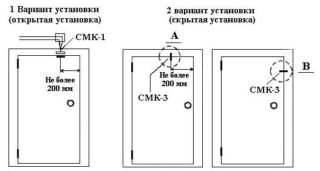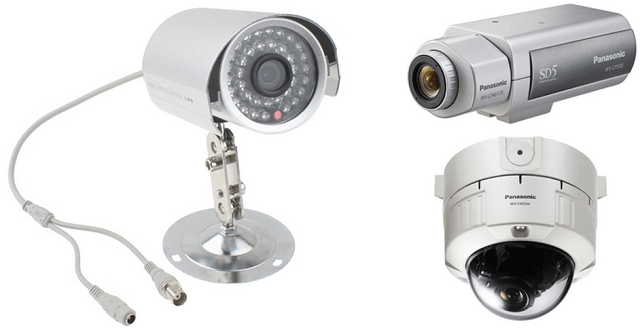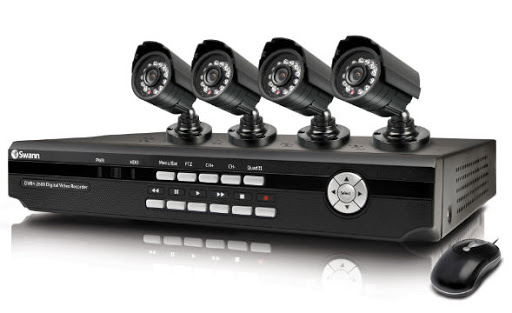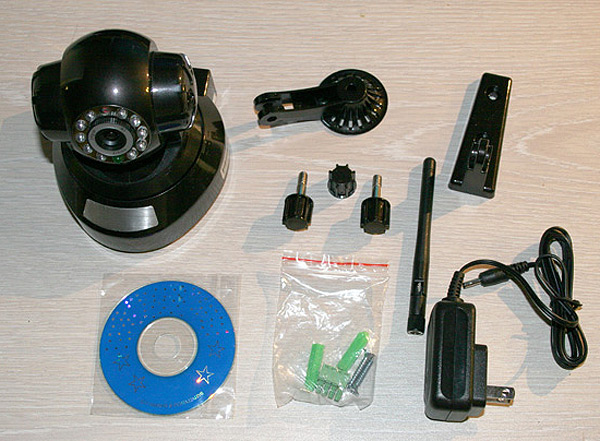For the operation of many devices, a necessary element is a device that can open or close contacts. One of these is a reed switch. Under the influence of a magnetic or electromagnetic field, it changes the state of the electrical circuit connected to the device. The reed switch is used in household meters, in security systems, in medical equipment.
Types and types of reed switches
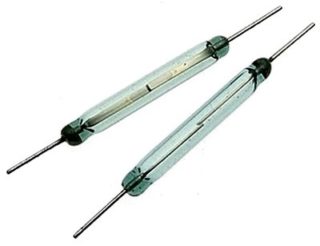
There are many options for reed relays. Devices are classified according to a variety of parameters: vibration level, capacity, contact group.
Magnetic
The device closes or opens a line that transmits electricity under the influence of a magnetic field. The source can be a permanent magnet or an electromagnet. On this basis, reed switches are divided into 3 categories:
- With a normally open circuit - in the normal state, the contacts are disconnected. Under the action of an electric current or a magnetic field, the plates are connected and the device transmits current.
- The opening reed magnet implements the opposite principle: in the normal state, the contacts are closed, but under the influence of a magnetic field, they open and the electrical circuit is disconnected.
- Switching relay - in this model there are 3 outputs. Outside the electromagnetic field, one pair is closed, and under the action of the field, the closed plates normally open, and the new one closes. In this case, the current flows through two different circuits, depending on the presence or absence of a magnetic field.
To open the door
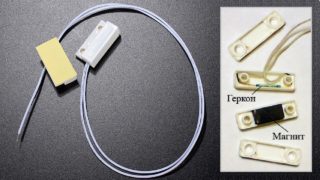
All door sensor variants operate on reed relays. However, the ways to connect the device are different. On this basis, there are 3 categories.
- Common - includes 2 parts with spring contacts. The magnetic field closes the spring contacts: their ends attract and close. When the field disappears, the 2 parts of the sensor are at a distance from each other, the springs open. The sensor is an element of the signaling circuit. A current flows constantly through the line. If the door is opened, the sensor breaks the circuit and the alarm is triggered. The response threshold is from 30 to 50 mm.
- Wireless sensor - it is based on a normally open reed switch and a communication module. The second part of the sensor is a magnet, under the action of which the contacts are closed. The device is mounted so that when the door is closed, the magnet is opposite the radio transmitting part in order to close the magnetic reed switch. If the doors are opened, the circuit is opened and an alarm is sent to the control unit. The response threshold is 10–20 mm. This option is more efficient than wired.
- GSM signaling consists of a reed switch and a GSM module. The principle of operation is similar to wireless. When the relay is triggered, the controller sends a text message to the owner of the apartment or office. Such a device is often endowed with additional functions.
The door opening sensor is an element of the security alarm system. Its task is to notify about unauthorized opening, not to prevent opening.
By design
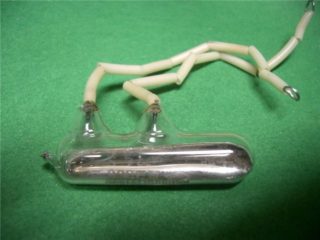
From a structural point of view, there are 2 types of reed switches:
- Dry - a sealed glass flask filled with dry air or other gas. Outside the cylinder, magnet cores are welded from the end, the contacts are inside.
- Mercury or "wetted" - drops of mercury are placed in the flask. They wet the contacts, which also improves the tightness of the closure.The mercury reed switch does not rattle or vibrate, but the response time of the sensor increases.
Mercury reed relays are a health hazard. These devices are disposed of in a special way.
Principle of operation
The principle of operation of any reed switch is as follows:
- When the field power exceeds a critical value, the elastic plates of the reed switch close, closing the circuit.
- When the external field is removed, the circuits are opened.
The reliability and popularity of reed switches are due to the tightness of the device. The contacts are isolated and unaffected by the environment. The device is not afraid of dust, dirt, water, aggressive chemicals.
Characteristics and parameters

When choosing a reed switch, it is evaluated according to the following criteria:
- the magnetomotive force of release and operation are the indicators at which the cores are opened or connected;
- transition resistance - the amount of resistance that occurs when connecting;
- insulation resistance - the value of resistance in the cavity between the terminals;
- capacitance - electrical capacitance between the terminals when opened;
- breakdown voltage - in this case, a breakdown of the element is possible;
- response time - the time interval between the appearance of the magnetic field and the actual first contact closure; the average response time is 0.2-1 μs, in a dry reed switch this indicator is less;
- release time - the interval between the decrease or disappearance of the field and the actual opening of the cores; the parameter is 0.2–1 μs;
- number of operations - the number of switching operations at which the reed switch does not lose performance;
- power - maximum power, determined by the section of the plates and the material; measured in W and kW;
- operating voltage - the value at which the reed switch holds the operating position;
- vibration level - the reed switch is weakly sensitive to vibration, but it can conduct it itself; the threshold cannot be exceeded, otherwise the glass bulb may crack.
All the necessary indicators are in the passport of the device.
Installation features
If the reed switch is installed indoors, it is fixed to the door, window frame, transom with ordinary bolts. If the magnetic reed sensor is installed in a warehouse, in a garage, inside a safe, before installation, it is necessary to drill holes for fasteners. A metal hose with a reed switch is cut in and welded onto the gate or door facing the street.
Scope of application
The sealed contact is used in a wide variety of applications:
- keyboards - synthesizers, industrial devices, computers;
- communication and medical equipment;
- alarm and automation systems: elevator car sensor, door opening, laptop cover;
- measuring equipment, meter circuits;
- maintenance of power cables - gersicons are used here;
- radio transmitting devices, lasers, radars.
Reed switches were very popular in the 70s of the last century. Devices are now being gradually replaced by solid-state elements.
Pros and cons of using
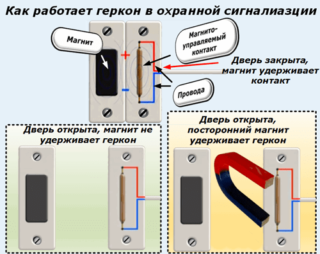
Hermetically sealed contact is popular for its many benefits:
- Durable - there is no friction during operation. If an inert gas is pumped into the flask or air is evacuated, the element works even longer.
- Minimum dimensions compared to a standard relay.
- High performance.
- The reed switch is capable of transmitting a signal of very low power.
- No interference. The signal is not distorted.
- Dust, dirt, moisture do not affect the operation of the device.
Disadvantages:
- glass flasks are rather fragile, reed switches are not used with strong vibration;
- response speed is high, but limited;
- dry switches rattle due to high elasticity;
- with a high current, the contacts may open spontaneously.
Despite the tightness, the plates inside the flask wear out over time. Under the influence of electrical corrosion, mechanical pinching of the plates is possible. After many operations, the contacts rub in and the surfaces are closed due to molecular forces. Over time, the door opening sensor has to be changed.

